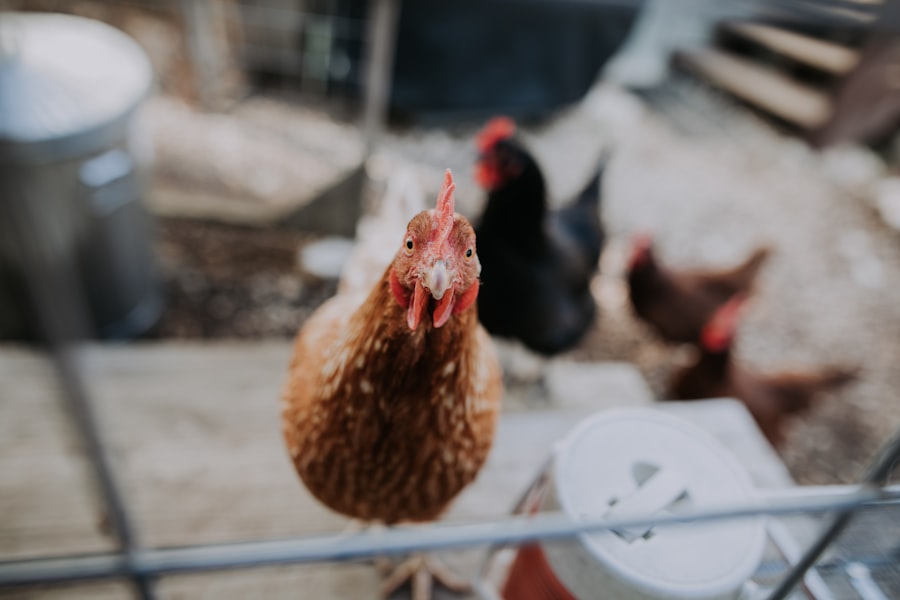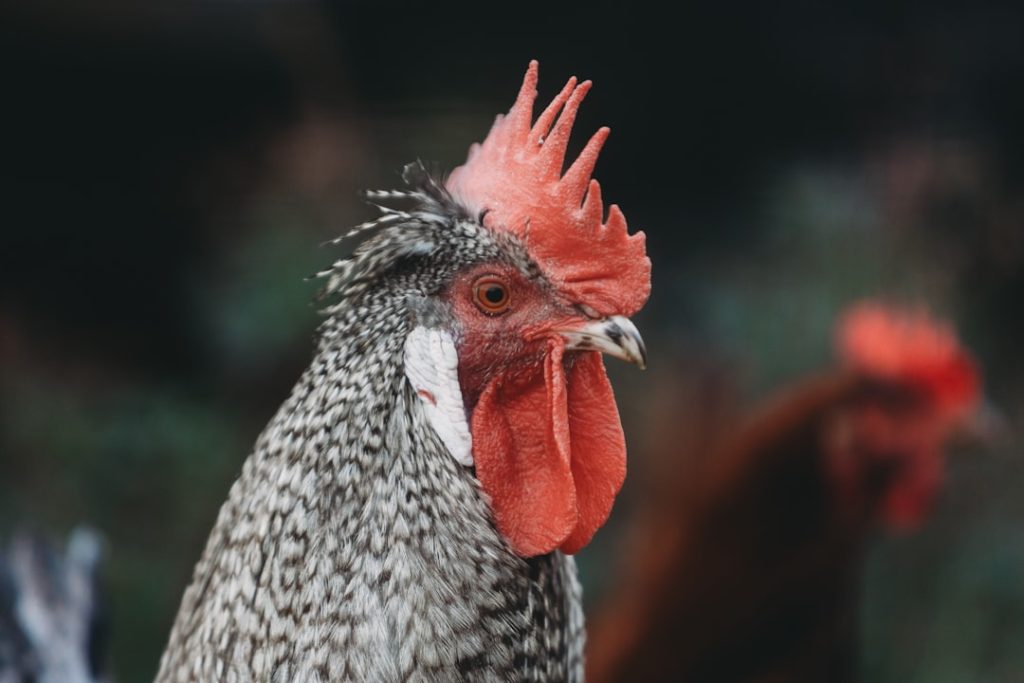Breeding chickens for meat production is a vital component of the poultry industry. The global demand for chicken meat has shown consistent growth, creating profitable opportunities for farmers and breeders. Consumers prefer chicken meat due to its versatility, affordability, and high protein content.
This sustained demand necessitates a continuous supply of high-quality meat chickens to meet market requirements. The practice of breeding meat chickens also contributes significantly to food security and sustainability efforts. As the world population increases, there is a growing need for efficient and sustainable food production methods.
Chicken meat serves as an excellent source of protein and essential nutrients, making it a valuable component of a balanced diet. Through the breeding of meat chickens, farmers and breeders play a crucial role in meeting the global demand for high-quality protein while supporting sustainable agricultural practices.
Table of Contents
- 1 Selecting the Right Breeds for Meat Production
- 2 Understanding the Nutritional Needs of Meat Chickens
- 3 Housing and Environmental Considerations for Meat Chickens
- 4 Health and Disease Management in Meat Chicken Breeding
- 5 Processing and Butchering Meat Chickens
- 5.1 Processing and butchering meat chickens is a crucial step in preparing them for sale and consumption. Proper processing ensures that the meat chickens are handled safely and hygienically to produce high-quality meat products.
- 5.2 The Butchering Process
- 5.3 Maximizing Yield and Preserving Quality
- 6 Marketing and Selling Meat Chickens
- 7 FAQs
- 7.1 What is the purpose of breeding chickens for meat?
- 7.2 What are the characteristics of chickens bred for meat?
- 7.3 How are chickens bred for meat selected and bred?
- 7.4 What are some common breeds of chickens bred for meat?
- 7.5 What are the challenges in breeding chickens for meat?
- 7.6 What is the role of genetics in breeding chickens for meat?
Key Takeaways
- Breeding chickens for meat is important for sustainable food production and meeting the demand for poultry products.
- Selecting the right breeds for meat production is crucial for achieving high-quality meat and efficient growth rates.
- Understanding the nutritional needs of meat chickens is essential for ensuring proper growth, development, and overall health.
- Housing and environmental considerations, such as space, ventilation, and cleanliness, are important for the well-being and productivity of meat chickens.
- Health and disease management is critical for preventing and controlling common illnesses in meat chicken breeding operations.
- Proper processing and butchering techniques are necessary for producing safe and high-quality meat products.
- Effective marketing and selling strategies are essential for reaching consumers and maximizing the profitability of meat chicken breeding operations.
Selecting the Right Breeds for Meat Production
Popular Meat Chicken Breeds
When it comes to breeding chickens for meat production, selecting the right breeds is essential for success. There are several breeds of chickens that are specifically bred for meat production, each with its own unique characteristics and advantages. Some of the most popular meat chicken breeds include the Cornish Cross, the Red Ranger, and the Freedom Ranger.
Key Characteristics of Meat Chicken Breeds
These breeds are known for their fast growth rates, efficient feed conversion, and high meat yields, making them ideal choices for meat production. In addition to considering the breed’s growth rate and meat yield, breeders should also take into account other factors such as disease resistance, temperament, and environmental adaptability.
Environmental Considerations
It’s important to choose breeds that are well-suited to the local climate and environmental conditions to ensure their health and overall well-being. By carefully selecting the right breeds for meat production, breeders can maximize their efficiency and productivity, ultimately leading to a successful and profitable chicken meat business.
Understanding the Nutritional Needs of Meat Chickens

Understanding the nutritional needs of meat chickens is crucial for ensuring their health, growth, and overall well-being. Meat chickens have specific dietary requirements that are essential for supporting their rapid growth and muscle development. A well-balanced diet is key to producing high-quality meat chickens with optimal meat yields.
A typical diet for meat chickens includes a combination of protein-rich feeds, grains, vitamins, and minerals to support their growth and development. Protein is a critical component of a meat chicken’s diet, as it is essential for muscle growth and development. High-quality protein sources such as soybean meal, fish meal, and poultry by-products are commonly used in meat chicken feeds to ensure they receive adequate nutrition.
In addition to protein, meat chickens also require carbohydrates for energy, fats for essential fatty acids, and a variety of vitamins and minerals to support their overall health. By understanding and meeting the nutritional needs of meat chickens, breeders can ensure that their chickens reach their full growth potential and produce high-quality meat.
Housing and Environmental Considerations for Meat Chickens
Proper housing and environmental considerations are essential for the health and well-being of meat chickens. Providing a suitable living environment is crucial for ensuring that meat chickens can thrive and reach their full growth potential. When it comes to housing meat chickens, there are several factors to consider, including space requirements, ventilation, temperature control, and cleanliness.
Adequate space is important to prevent overcrowding and reduce stress among the chickens, which can negatively impact their growth and overall health. Ventilation is another important consideration when housing meat chickens, as it helps to maintain air quality and regulate temperature levels within the chicken house. Proper ventilation can help prevent respiratory issues and reduce the risk of disease outbreaks among the flock.
Temperature control is also crucial, especially during extreme weather conditions, as it can impact the chickens’ comfort and overall well-being. Additionally, maintaining a clean and sanitary environment is essential for preventing disease and promoting good health among meat chickens. By providing suitable housing and environmental conditions, breeders can ensure that their meat chickens are healthy, comfortable, and able to reach their full growth potential.
Health and Disease Management in Meat Chicken Breeding
Health and disease management are critical aspects of meat chicken breeding that require careful attention and proactive measures. Maintaining good health among meat chickens is essential for ensuring their growth, productivity, and overall well-being. Preventing disease outbreaks and managing potential health issues are key priorities for breeders to maintain a healthy flock.
Implementing biosecurity measures, such as controlling access to the farm, disinfecting equipment, and monitoring visitors, can help prevent the introduction and spread of diseases within the flock. Regular health monitoring and observation are also important for identifying any signs of illness or disease early on. This allows breeders to take prompt action and implement appropriate treatment measures to prevent further spread and minimize the impact on the flock.
Additionally, vaccination programs can be implemented to protect meat chickens from common diseases and ensure their long-term health and productivity. By prioritizing health and disease management in meat chicken breeding, breeders can maintain a healthy flock and minimize the risk of disease outbreaks, ultimately leading to a successful and sustainable chicken meat business.
Processing and Butchering Meat Chickens

Processing and butchering meat chickens is a crucial step in preparing them for sale and consumption. Proper processing ensures that the meat chickens are handled safely and hygienically to produce high-quality meat products.
Importance of Hygiene Practices
When it comes to processing meat chickens, it’s important to follow strict hygiene practices to prevent contamination and ensure food safety. This includes maintaining clean processing facilities, using proper sanitation methods, and following strict handling procedures throughout the entire process.
The Butchering Process
Butchering meat chickens requires skill and precision to ensure that the meat is properly prepared for sale or consumption. This involves carefully removing feathers, eviscerating the carcass, and portioning the meat into different cuts.
Maximizing Yield and Preserving Quality
Proper butchering techniques help maximize the yield of high-quality meat products while minimizing waste. Additionally, proper packaging and storage methods are essential for preserving the quality and freshness of the meat products until they reach the consumer. By prioritizing proper processing and butchering practices, breeders can ensure that their meat chickens are prepared safely and efficiently for sale, ultimately meeting consumer demand for high-quality chicken meat products.
Marketing and Selling Meat Chickens
Marketing and selling meat chickens require strategic planning and effective communication to reach potential customers and maximize sales opportunities. Developing a strong marketing strategy is essential for promoting meat chickens to target markets and attracting potential buyers. This may involve creating a brand identity, developing promotional materials, and utilizing various marketing channels such as social media, online platforms, or local markets to reach consumers.
Building strong relationships with potential buyers such as restaurants, grocery stores, or direct consumers is also important for selling meat chickens effectively. Providing high-quality products, reliable delivery services, and excellent customer service can help build trust and loyalty among customers. Additionally, offering competitive pricing options or special promotions can help attract new customers while retaining existing ones.
Furthermore, transparency in communicating information about the breeding practices, animal welfare standards, and product quality can help build trust with consumers who are increasingly interested in knowing where their food comes from. By effectively marketing and selling meat chickens, breeders can successfully meet consumer demand while building a strong reputation in the market for providing high-quality chicken meat products.
If you’re interested in breeding chickens for meat, you may also want to consider the importance of providing a suitable environment for your chickens. The Snaplock Chicken Coop from Poultry Wizard is a great option for keeping your chickens safe and comfortable. Check out their article on Snaplock Chicken Coop to learn more about this essential aspect of chicken breeding.
FAQs
What is the purpose of breeding chickens for meat?
Breeding chickens for meat is done to produce birds that are specifically suited for meat production. These chickens are bred to grow quickly and efficiently, with a focus on producing high-quality meat for consumption.
What are the characteristics of chickens bred for meat?
Chickens bred for meat typically have a fast growth rate, efficient feed conversion, and a high meat yield. They are often larger in size and have a higher muscle mass compared to chickens bred for egg production.
How are chickens bred for meat selected and bred?
Chickens bred for meat are selected and bred based on specific traits such as growth rate, feed efficiency, and meat quality. Selective breeding is used to continually improve these traits in subsequent generations of chickens.
What are some common breeds of chickens bred for meat?
Some common breeds of chickens bred for meat include the Cornish Cross, Ross 308, and Cobb 500. These breeds have been specifically developed for their meat production qualities.
What are the challenges in breeding chickens for meat?
Challenges in breeding chickens for meat include maintaining the health and welfare of the birds, managing rapid growth rates to prevent health issues, and ensuring that the meat produced meets quality and safety standards.
What is the role of genetics in breeding chickens for meat?
Genetics play a crucial role in breeding chickens for meat, as specific genetic traits are selected and bred to produce birds with desirable meat production characteristics. Genetic selection helps to improve traits such as growth rate, feed efficiency, and meat quality.

Meet Walter, the feathered-friend fanatic of Florida! Nestled in the sunshine state, Walter struts through life with his feathered companions, clucking his way to happiness. With a coop that’s fancier than a five-star hotel, he’s the Don Juan of the chicken world. When he’s not teaching his hens to do the cha-cha, you’ll find him in a heated debate with his prized rooster, Sir Clucks-a-Lot. Walter’s poultry passion is no yolk; he’s the sunny-side-up guy you never knew you needed in your flock of friends!
Meet Walter, the feathered-friend fanatic of Florida! Nestled in the sunshine state, Walter struts through life with his feathered companions, clucking his way to happiness. With a coop that’s fancier than a five-star hotel, he’s the Don Juan of the chicken world. When he’s not teaching his hens to do the cha-cha, you’ll find him in a heated debate with his prized rooster, Sir Clucks-a-Lot. Walter’s poultry passion is no yolk; he’s the sunny-side-up guy you never knew you needed in your flock of friends!







